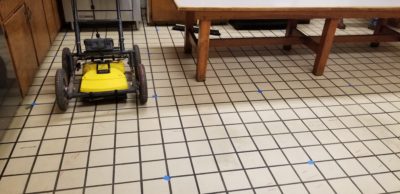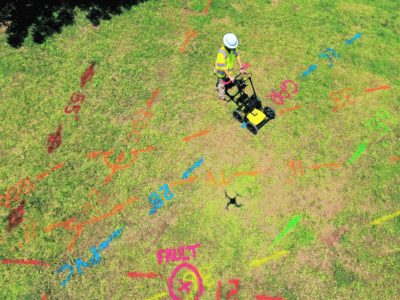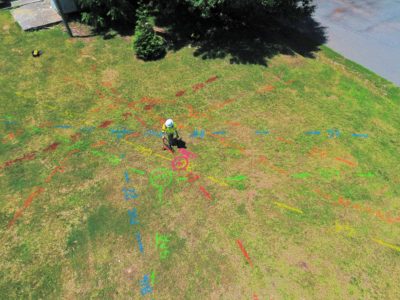
BEFORE YOU DIG

Locating Underground Utilities can be a Challenge
and we LOVE a challenge

Outdoor utility location is all about keeping your project safe! When digging or digging deep into the ground, you don’t want to accidentally hit hidden utilities like pipes or wires. By finding and marking where these utilities are, we help you avoid costly mistakes, safety issues, and mess-ups.
We use cool tools like Electro-Magnetic Locators (EML) to find and mark utilities in the ground with the right colors and depths. For things like PVC pipes or other non-metallic materials, we bring out Ground Penetrating Radar (GPR) — it looks like a big push lawnmower and helps us spot what EML might miss. We also double-check the depths of any metallic utilities to be super accurate.
In the end, we create super-clear maps of your underground utilities so you can plan your project with confidence!

Indoor utility location is all about finding where the hidden wires, pipes, and cables are inside your building. Whether it’s electrical wiring, plumbing, gas lines, or ventilation ducts, knowing exactly where these are can save you from big headaches during repairs or renovations.
We use cool tools like electronic detectors, ground-penetrating radar (GPR), and thermal imaging to spot these hidden utilities, especially when blueprints aren’t clear or available. By mapping everything out, we make sure you can manage your building’s systems safely and avoid accidents when doing construction or upgrades!

Ground-penetrating radar (GPR) is like a super-powered radar that lets us “see” underground! It sends out radar pulses to find things buried beneath the surface, like pipes, cables, and wires.
GPR works great for both metal and non-metal things, especially when they stand out from the soil around them. Things like soil type, moisture, and how deep the utilities are can affect how well GPR picks them up. To get the best results, we might use other tools or maps along with GPR.
When it comes to finding buried utilities, trust the pros (like us!) with the experience to do it right!

We can find and fix electrical faults that happen when wires get damaged, letting moisture in, causing corrosion, and even leading to dangerous overheating. This could mean power cuts or equipment not working right. Sometimes, a rock in the ditch can rub through the wire’s insulation, creating a short that trips the breaker!
Instead of ripping out and replacing the entire cable (which is costly, messy, and time-consuming), we can pinpoint the exact spot where the fault is, saving you from all the digging and expensive repairs. Once we find the fault, you can just dig up that spot, fix it, and get your power back on—without all the hassle!

We find the water line—whether it’s metal or PVC—then use high-tech gear to listen for the leak and pinpoint the exact spot. Once we mark it, the excavator can dig right to the problem and fix it fast!
We also check out all the other utilities nearby, like power, gas, and communication lines, so nothing gets damaged during the repair. This makes sure the whole process is safe and smooth!
